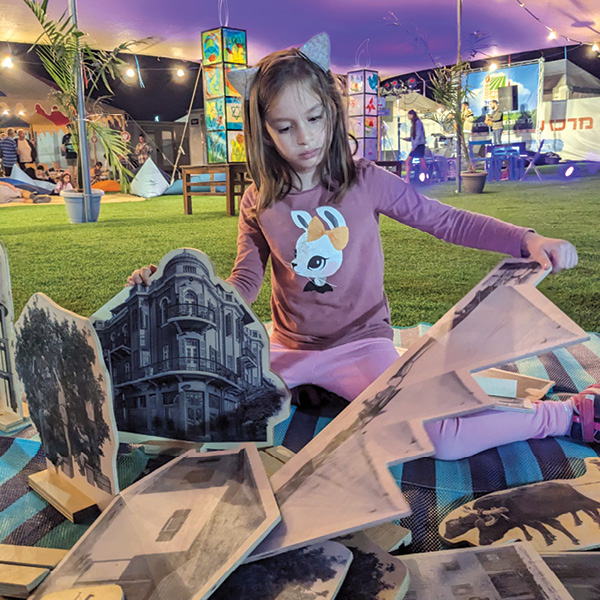When the beds were arranged, the food secured, and the immediate emergency needs of displaced Israelis had been addressed after October 7, another realization emerged: children who had been ripped from their normal lives needed some kind of framework to establish a routine, to be entertained and educated, and to allow their parents some respite.
Enter Jewish National Fund-USA’s affiliated historical preservation organization, whose usual operations include putting together content for activities that run at 200 heritage sites throughout the year. Now, they cross Israel from North to South daily in the magical NostalgiCar, packed with special items, and visit evacuation centers and run activities for the children.
When the NostalgiCar arrives, the children take part in heritage-themed crafts, listen to stories, dress up in period costumes and play games led by the team. Their connection to the land and Israel’s heritage is emphasized, gently helping them identify with their roots and establishing a sense of pride and belonging.
“When we visit the evacuation centers, we get to see and hear so many things through the eyes of these beautiful children who’ve been through so much,” said Karen Reisch, the team’s head, who gives some examples of the many moments that have touched her heart. “Like helping a child put together a historical town from a cut-out model and hearing him ask in heart-tugging innocence why there is no bomb shelter. Or sitting beside the little girl who’s drawing a picture to decorate her family’s new room in the evacuation center. Or playing games with the older children where they must complete daring missions like Israel’s early pioneers.”
While on the surface, the children look like a happy group enjoying fun activities outdoors, it soon becomes clear that the trauma runs deep. They are more tearful, clingy, and impatient. Some children express their distress through their artwork, like the little girl who chose to color her hands black and banged them angrily on a picture of a house to cover the page.
“The way I see it,” explained Avishag, a National Service volunteer, sitting on the ground with a child and putting together a model of a house, “is that there are soldiers out there protecting the children physically, and my mission is to protect their hearts and souls.”
Reisch strengthened this message: “My team and I have adopted a new mantra these days: ‘Whoever manages to put a smile on the face of a child, it’s as if they’ve saved an entire world.’”

